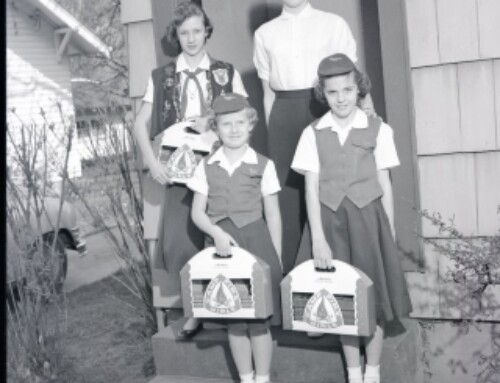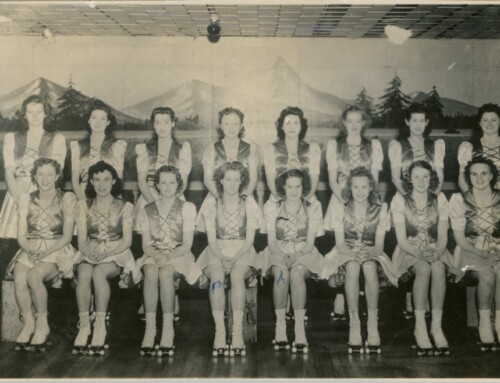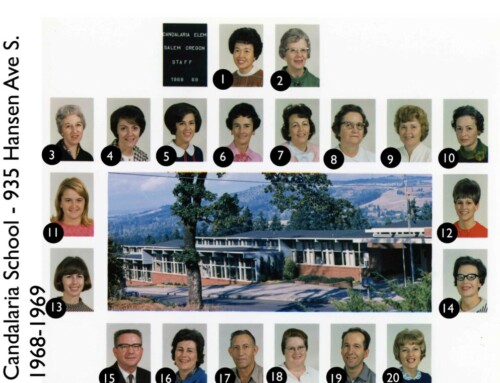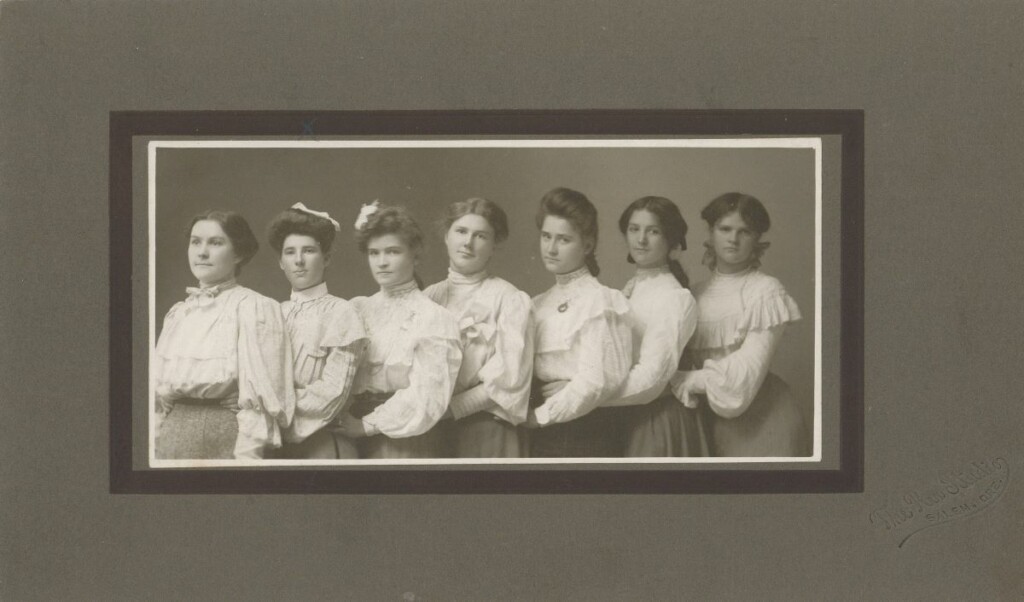
Giles Packing House Girls, Fall 1905, Salem, OR, WHC Collections 2023.032.0001
After this photo of female employees of the Giles Packing House was donated to the Willamette Heritage Center in July 2023, we were curious to know a little bit more about the business. A label on the back of the photo matte reads:
Giles Packing House Girls, Fall 1905, Salem, Ore., Trade St.
And the names of the young women are also listed:
Nora Allen, Pearl Rahn, Mary Carter, ? Allen [sister of Nora], Maggie Carter [sister of Mary], Nina [Allen] Elliott, Irene [Tuel] Nash[1]
Oregon Prunes
The H.S. Gile Packing House was a wholesale buyer and shipper of Oregon fruits and produce. They also carried a full line of orchard and shipping boxes. It began in 1900 in tandem with the Willamette Valley Prune Grower’s Association, an organization formed for the primary interest of handling Oregon prunes from grower to customer.[2] In 1901, H.S. Gile was elected secretary and manager of the concern. Each year, the group acted as a cooperative for locally grown prunes and after assessing market conditions determined the pricing at which the prunes would be sold to a nationwide market. Under Gile’s management. Their packing plant was located at 306 High St. at the southwest corner of Trade and High Streets in Salem[3]. A 1909 news article described a visit to the company, its workers, and the process of packing prunes, within a few years of when the Giles Packing House Girls would have worked there.
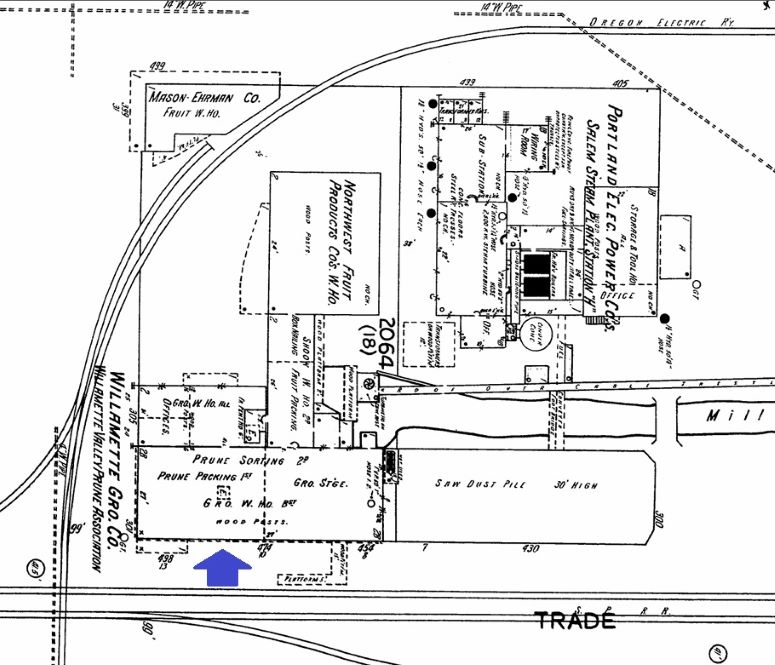
Location of Willamette Valley Prune Association, later H.S. Gile Packing House, 306 High St. Salem, OR. Digital Sanborn Map Collection, Multnomah County Library.
Glimpse into the operations
A visit to the H.S. Gile packing house disclosed great activity in every department, for while packing begun only Monday, a car of prunes was shipped yesterday to Hamburg, Germany. The new building for the packers has been rushed to completion for this season’s work and is conveniently arranged for the workers. It is well lighted, which is an important feature, as the work is done entirely in the darker months of winter. About 50 girls and women were busily engaged in facing the prunes, which is the term given to the flattening of the prunes by hand and placing two layers of them in boxes which are afterward filled with loose prunes, pressed down by machinery and covers nailed on. The box is then inverted and the carefully faced side is the one opened by the consumer.
Great progress has been made in the preparation for market, until now a box of first quality prunes is put up as daintily as any choice confection. The boxes, which are carefully turned and made, range in size from five to 50 pounds, and all of the smaller sizes are lined with oiled paper, and many are dainty carton boxes, not unlike those used for bon bons. Sanitary regulations seem to be strictly observed and the women employees wear large sleeved aprons over their street dresses so that no particle of dust or germ is likely to find its way to the fruit.
The processes are varied, the prune being handled many times before it is ready for the trade. It is first shaken from the tree upon the ground or upon canvas stretched beneath the tree for that purpose. Entire families camp at the prune orchards and gather the fruit, which is cured in dryers by artificial heat. They are graded or sorted by machinery, the various sizes being handled separately. The next process is a careful steaming and after the prunes are softened they are faced by hand for the boxes.
Experienced workers are able to make $2.00 per day, while it is possible for new hands to earn $1 daily. The work is light and so many unemployed women have selected this as their winter work that the ranks of domestic service have been sadly depleted. The work will last until the first of the year.[4]
References:
[1] Note that there are two sets of sisters in the photo, the Allens and the Carters.
[2] “Will Handle Prunes,” incorporation of Willamette Valley Prune Association, Oregon Statesman, 15 Jul 1900, p. 5
[3] In 1920, the Vick Bros. building would be built on this piece of property, at the time of research, the Vick Bros. building had been renovated and was owned by Western Oregon University for use as a satellite campus.
[4] “Prune Pack is Under Way,” Oregon Statesman, 6 Oct 1909, p. 1



